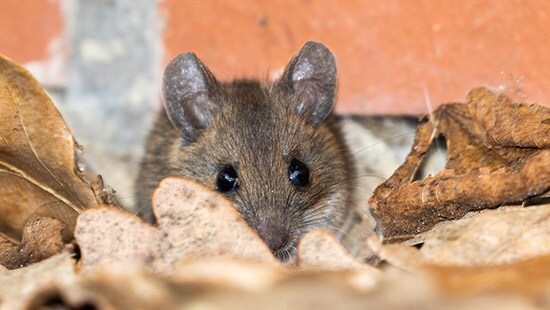How To Keep Rodents Out This Winter
Pest Press Newsletter

Rats and mice can be an issue any time of the year, but they are particularly problematic as cool weather sets in and rodents, that lived outdoors throughout the summer, begin seeking warm harborage and easier access to food. Foodservice, hospitality, and retail establishments – with their abundance of food, as well as hidden nooks and crannies – can be particularly attractive to these rodent pests.
Once inside, rodents can contaminate food, packaging, and food-contact surfaces; damage and destroy structural components and equipment; cause health inspection failures; and drive away customers. Even if never seen by an inspector or customer, rodents are a threat to public health, urinating and dropping feces as they scurry around the facility, spreading bacteria and contamination – from beneath equipment and behind walls to across food surfaces, packaging, and food. According to the Centers for Disease Control and Prevention, rodents can transmit more than 35 diseases to humans directly or indirectly, including foodborne diseases such as salmonellosis.
How do rodents get in?
A mouse can enter a building through an opening as small as a dime, a rat through one the size of a quarter. From this, it’s not hard to see that it’s easy for rodents to slip into buildings beneath doors; through vent openings; and via small gaps around cables, wires, and pipes.
Thus, these and significantly larger openings can be a literal invitation for rodents to enter and make your facility their new home. The following are other entry points to be aware of – and avoid:
- Doors left open (including dock doors), especially after dark.
- Doors that do not properly close.
- Structural damage (or design) that creates holes or gaps.
- Unscreened vents and pipe chases.
- Uninspected product deliveries.
Exterior protection. Minimize food, water, and harborage areas:
- Keep garbage areas clean and away from the facility; have tight-fitting lids on all receptacles.
- Clear clutter and exterior storage.
- Eliminate standing water.
- Remove weeds, tall grass, etc.
Entry exclusion. Create a barrier to minimize entry points:
- Trim trees and shrubs so they don’t touch the building as rodents will use this to reach entry points.
- Seal holes and gaps in the structure, including openings around pipes and utility wires.
- Seal all doors and windows, regularly inspect and repair screening, door sweeps, etc.
- Keep doors closed when not in use, educating employees on reasons for not propping them open during smoke or lunch breaks.
- Install climb guards (e.g., a metal plate on the wall beneath docks to prevent rodents from climbing).
- Inspect incoming goods for the presence of pests.
Interior reinforcement. Minimize conducive conditions within the facility:
- Clean spills immediately.
- Regularly inspect and clean under shelves and other less visible areas.
- Eliminate standing water and accumulated condensation.
- Seal gaps and holes that could lead to hidden harborage.
- Thorough inspections to identify access points and exterior pressure near your facility.
- Discussion of inspection findings and recommendations for control and prevention.
- Discreet trapping and baiting (as allowed by law) to establish a barrier of protection on the exterior and monitor introduction points with interior devices.
- Rodenticide-free device options to lower environmental impact.
- Data-driven reporting and insights.


